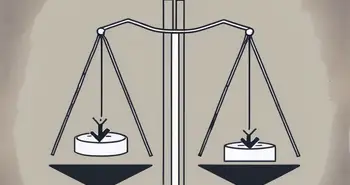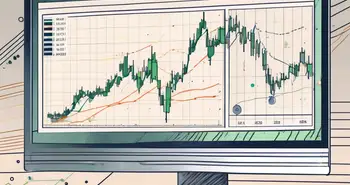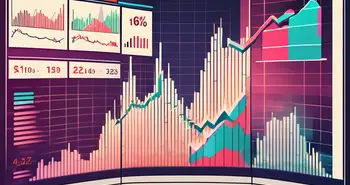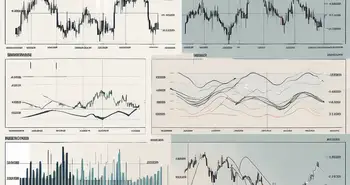Different Types of Limit Orders

As an experienced trader, I know how important it is to have a solid understanding of the different types of limit orders. Limit orders are a key tool in trading, allowing you to set specific parameters for buying or selling a security. In this comprehensive guide, I will walk you through everything you need to know about limit orders, from their basic mechanics to the various types available. So, let's dive in!
Understanding Limit Orders
Before we delve into the different types of limit orders, let's first establish a clear understanding of what a limit order is and why it is important in trading. A limit order is an instruction to buy or sell a security at a specific price or better. Unlike market orders, which execute immediately at the prevailing market price, limit orders give you more control over the execution price.
So, why are limit orders important? One of the key benefits of using limit orders is that they allow you to set a desired entry or exit price in advance. This can be particularly useful when you want to take advantage of specific price points or when you want to protect your investment from potential losses.
Definition and Importance of Limit Orders
Let's start by defining what a limit order is. A limit order is an instruction you give to your broker to buy or sell a security at a specific price or better. It sets a boundary, either for your purchase price or sale price, ensuring that your order is executed within your desired price range. The importance of limit orders lies in their ability to provide you with control over the execution price of your trade.
The Basic Mechanics of Limit Orders
Understanding the basic mechanics of limit orders will help you grasp the concept more easily. When you place a limit order, you specify the price at which you want to buy or sell the security. If the market price reaches or surpasses your specified price, your order will be executed. However, if the price does not reach your specified level, your order will remain open until the conditions are met or until you cancel it.
Types of Limit Orders
Now that you have a solid understanding of limit orders, let's explore the different types available:
Market Limit Orders
A market limit order is the most common type of limit order. It allows you to set a maximum price at which you are willing to buy or a minimum price at which you are willing to sell. This type of limit order guarantees that your order will be executed as long as the market price is within your specified range.
Stop Limit Orders
A stop limit order combines the features of a stop order and a limit order. It consists of a stop price and a limit price. When the stop price is reached, the order is triggered and becomes a limit order. The limit price determines the maximum or minimum price at which you are willing to buy or sell.
Trailing Stop Limit Orders
A trailing stop limit order allows you to set a trailing stop price, which adjusts automatically as the market price of the security changes. This type of order is useful for locking in profits or limiting potential losses.
Fill or Kill Limit Orders
A fill or kill limit order is an order to buy or sell a security immediately and in its entirety. If the order cannot be filled completely, it will be canceled. This type of limit order is commonly used when liquidity is important and a partial fill is not desirable.
How to Choose the Right Limit Order
Now that you are familiar with the different types of limit orders, you may wonder how to choose the right one for your trading strategy. When selecting a limit order, consider the following factors:
Factors to Consider
1. Timeframe: Determine the duration for which you want your order to be active. Some limit orders expire after a certain period or at the end of the trading day.
2. Volatility: Assess the market volatility and adjust your limit order accordingly. In highly volatile markets, consider using wider price ranges to avoid premature order executions.
3. Risk tolerance: Evaluate your risk tolerance and set appropriate price parameters. A conservative trader may opt for tighter price ranges, while an aggressive trader may choose wider ranges.
Choosing the right limit order requires careful consideration of these factors, as well as an understanding of your own trading objectives and risk appetite.
Risks and Rewards of Different Limit Orders
There are risks and rewards associated with each type of limit order. Market limit orders offer the highest probability of execution but do not guarantee a specific price. Stop limit orders provide more control over the execution price but may not be triggered if the market moves too quickly. Trailing stop limit orders can offer potential profit maximization but may result in missed opportunities if the market reverses before the trailing stop is hit. Fill or kill limit orders ensure immediate execution but may be canceled if the order cannot be filled in its entirety.
Consider the pros and cons of each limit order type to determine which one aligns best with your trading strategy and risk profile.
The Role of Limit Orders in Trading Strategy
Limit orders play a crucial role in enhancing trading efficiency and managing risk. Let's explore their significance in more detail:
Enhancing Trading Efficiency
By setting specific price parameters, limit orders allow you to automate your trading strategy. This automation can save you time and reduce the need for constant monitoring of the market. With limit orders, you can focus on other aspects of your trading plan, confident that your orders will be executed according to your predefined criteria.
Limit Orders for Risk Management
Limit orders are an essential tool for risk management in trading. They provide you with a level of control over the execution price, allowing you to minimize potential losses and protect your investments. By setting stop prices and limit prices, you can establish predetermined exit points and prevent emotional decision-making.
Limit Orders vs Market Orders
It is crucial to distinguish between limit orders and market orders, as each serves a different purpose. Let's explore the key differences and similarities:
Key Differences and Similarities
The main difference between limit orders and market orders lies in the execution price. Limit orders allow you to specify the price at which you want to buy or sell, whereas market orders are executed at the prevailing market price. Limit orders offer more control over the execution price, while market orders prioritize immediate execution.
However, it is important to note that limit orders and market orders can be used together in a trading strategy. For example, you can use a market order to enter or exit a position quickly and then place a limit order to further fine-tune your execution price.
When to Use Each Order Type
Use a limit order when you want to set a specific entry or exit price and are willing to wait for the market to reach that price. This is particularly useful when you have a target price in mind or when you want to protect your investments from sudden market fluctuations. On the other hand, use a market order when immediate execution is more important than achieving a specific price. Market orders are suitable when you need to quickly enter or exit a position, regardless of the exact price.
FAQs
Q: What is a limit order?
A limit order is an instruction to buy or sell a security at a specific price or better. Unlike market orders, limit orders provide more control over the execution price, allowing traders to set desired entry or exit points.
Q: Why are limit orders important?
Limit orders are important in trading because they give traders more control over their execution price. By setting specific price parameters, limit orders allow traders to take advantage of desired price points and protect their investments from potential losses.
Q: What factors should be considered when choosing a limit order?
When selecting a limit order, consider the timeframe for which the order should be active, the volatility of the market, and your own risk tolerance. These factors will help determine the appropriate price parameters and ensure that your limit order aligns with your trading strategy.
Q: What risks and rewards are associated with different types of limit orders?
Each type of limit order has its own risks and rewards. Market limit orders offer a high probability of execution but do not guarantee a specific price. Stop limit orders provide more control over the execution price but may not be triggered in fast-moving markets. Trailing stop limit orders offer potential profit maximization but may result in missed opportunities if the market reverses. Fill or kill limit orders ensure immediate execution but may be canceled if the order cannot be filled in its entirety.
Q: How do limit orders enhance trading efficiency?
Limit orders enhance trading efficiency by allowing traders to automate their trading strategy. With specific price parameters set in advance, traders can focus on other aspects of their trading plan and have confidence that their orders will be executed according to their predefined criteria.
Q: What role do limit orders play in risk management?
Limit orders are essential for risk management in trading. By setting stop prices and limit prices, traders can establish predetermined exit points and minimize potential losses. Limit orders provide a level of control over execution prices that can help traders protect their investments and prevent emotional decision-making.
Q: What are the main differences between limit orders and market orders?
The main difference between limit orders and market orders lies in the execution price. Limit orders allow traders to specify the price at which they want to buy or sell, while market orders are executed at the prevailing market price. Limit orders provide more control over execution prices, while market orders prioritize immediate execution.
Q: When should I use a limit order versus a market order?
Use a limit order when you want to set a specific entry or exit price and are willing to wait for the market to reach that price. This is useful when you have a target price in mind or when you want to protect your investments from sudden market fluctuations. Use a market order when immediate execution is more important than achieving a specific price. Market orders are suitable when you need to quickly enter or exit a position, regardless of the exact price.
Now that you have a comprehensive understanding of different types of limit orders, you can apply this knowledge to enhance your trading strategy and take control of your trades. Remember, proper risk management and an understanding of the market are key to successful trading. So, use limit orders wisely and embark on your journey towards financial success!
Ready to take your trading to the next level with the innovative tools and strategies discussed in this guide? Discover Morpher, the revolutionary trading platform that leverages blockchain technology to offer zero fees, infinite liquidity, and a unique trading experience. Whether you're interested in stocks, cryptocurrencies, or even niche markets like NFTs, Morpher's fractional investing, short selling capabilities, and up to 10x leverage have you covered. Plus, with the Morpher Wallet, you maintain complete safety and control over your investments. Sign Up and Get Your Free Sign Up Bonus today to transform your trading experience with Morpher!

Disclaimer: All investments involve risk, and the past performance of a security, industry, sector, market, financial product, trading strategy, or individual’s trading does not guarantee future results or returns. Investors are fully responsible for any investment decisions they make. Such decisions should be based solely on an evaluation of their financial circumstances, investment objectives, risk tolerance, and liquidity needs. This post does not constitute investment advice.

Painless trading for everyone
Hundreds of markets all in one place - Apple, Bitcoin, Gold, Watches, NFTs, Sneakers and so much more.

Painless trading for everyone
Hundreds of markets all in one place - Apple, Bitcoin, Gold, Watches, NFTs, Sneakers and so much more.








